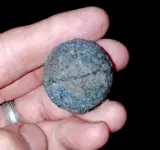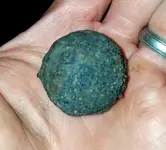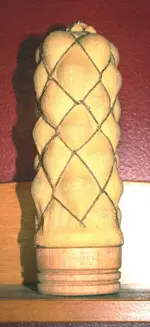Since you asked for my input on your post...
Case-Shot means the balls are contained inside a hollow explosive shell.
Canister-balls are contained inside a tinned-iron sheetmetal can, or a container made of some other material.
Neither Case-Shot nor Tin-Can Canister artillery ammunition existed during the Revolutionary War.
Case-Shot was invented by British army Lieutenant Henry Shrapnel in 1784, a year after the end of the Revolutionary War.
I have not seen any "tin-can" Canister ammo found at RevWar sites. Some modern writings on the subject say tin-can Canister existed at that time, but I haven't heard of any being dug at RevWar (or earlier) sites.
By the way... a small correction to your post, if I may... the civil war "Shot Tables" document I frequently cite in my posts says the diameter of 12-Pounder caliber Canister balls is between 1.46-inches and 1.49-inches. So your find cannot be 12-Pounder Canister balls.
www.civilwarartillery.com/shottables.htm
Due to the context (location) AND quantity of your find (14 balls in a small area), AND their crude casting, I think they are indeed artillery-ammo balls, not civilian-usage ones.
The civil war "Shot Tables" document covers artillery ammo from the early-1800s through 1861. As you mentioned, it does not have any listing for 1.20"-1.25" balls. However, because the Shot Tables do not list the size of the balls in a then-obsolete variety of grapeshot ammo called Quilted Qrapeshot, I theorize that the balls you found could be from a Quilted Grapeshot. The "base" of that type of Grape usually was a thick iron disc with a thick rod protruding up from the center of the base. The balls were stacked in circles around the rod. That assembly was contained inside a canvas (or other fabric) "sleeve" or bag, which was held together with twisted wires forming a "quilt" pattern on the bag's exterior. See the photo below. (However, its base is made of wood, instead of having the usual iron base.)
I suggest you hunt that spot in the creek closely, to see if you can find a Quilted grapeshot's thick iron base-disc and centerpole.






